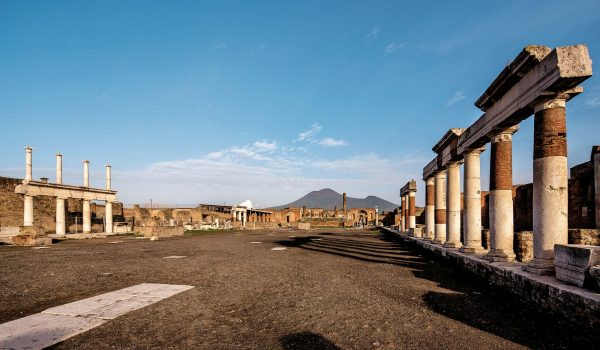Johannes Lipps (Eberhard Karls University of Tübingen)
APP contact person Francesco Muscolino
For about two hundred years, the Pompeii Forum has been at the centre of archaeological research. However, several sectors haven’t been analysed in detail yet. Among them, there is the so-called Comitium, a building in the south-east corner of the square, which was probably used for local elections, as a place to administer justice or a market place.
Within the framework of the project, a series of georadar prospections were performed in the area of the Comitium and the eastern portico of the forum. The traces of the identified structures are particularly relevant, as they provide, for the first time ever, information on the urban layout of the area between Via dell’Abbondanza and the forum in a phase preceding the construction of the building. The visible traces could cautiously be interpreted as a row of tabernae facing Via dell’Abbondanza and the perimeter walls of a domus. All these structures were razed when the Comitium was built. This intervention also required the neighbouring casa di Pane (VIII.3.31), or ‘house of bread’, to be reduced in size.
The floor of the ‘Comitium’ was dismantled after 79 and this provides a valuable evidence of the excavation activities carried out to recover the construction materials following the eruption. The well-preserved marks on the preparation layer and some of its fragments on a lapilli layer indicate that the floor was originally made up of rectangular slabs of white marble. On the basis of the results from the excavation surveys and the preliminary analysis of the materials found (pottery and some coins), it seems possible that this floor and the entire building date back to the Augustan age.


